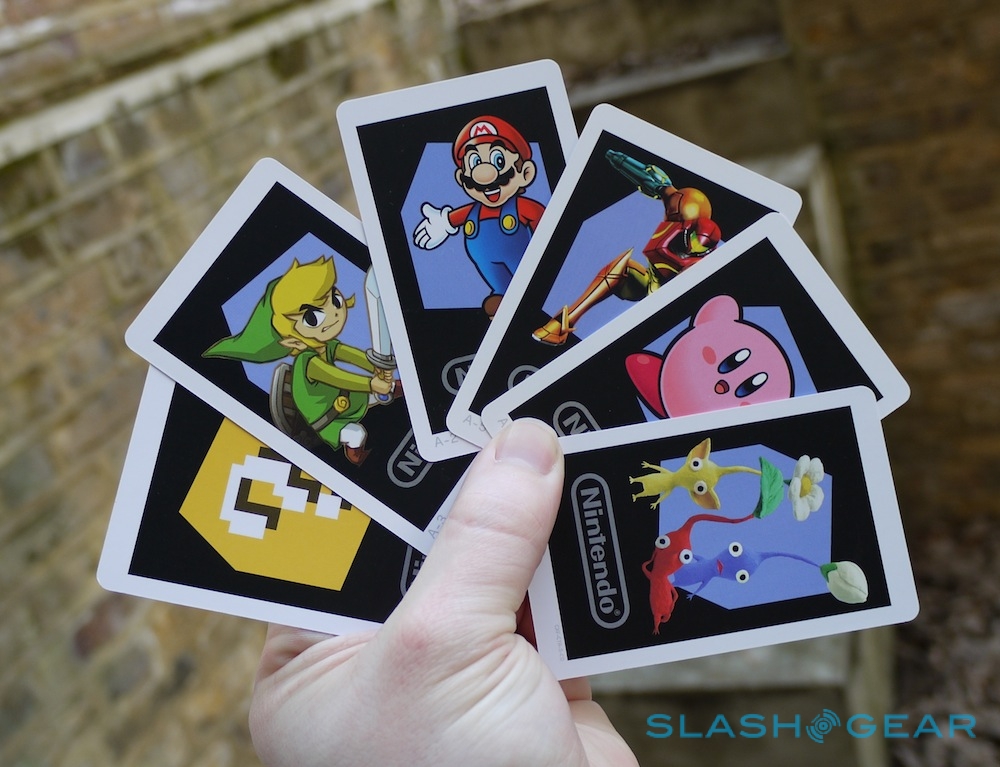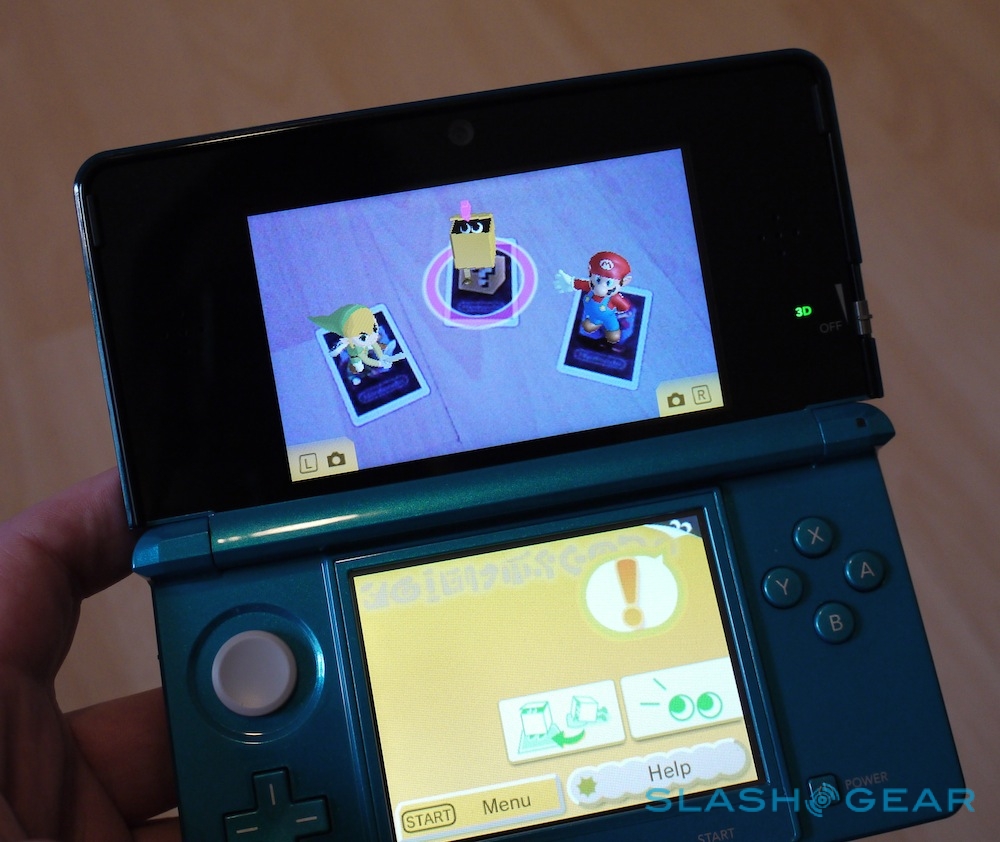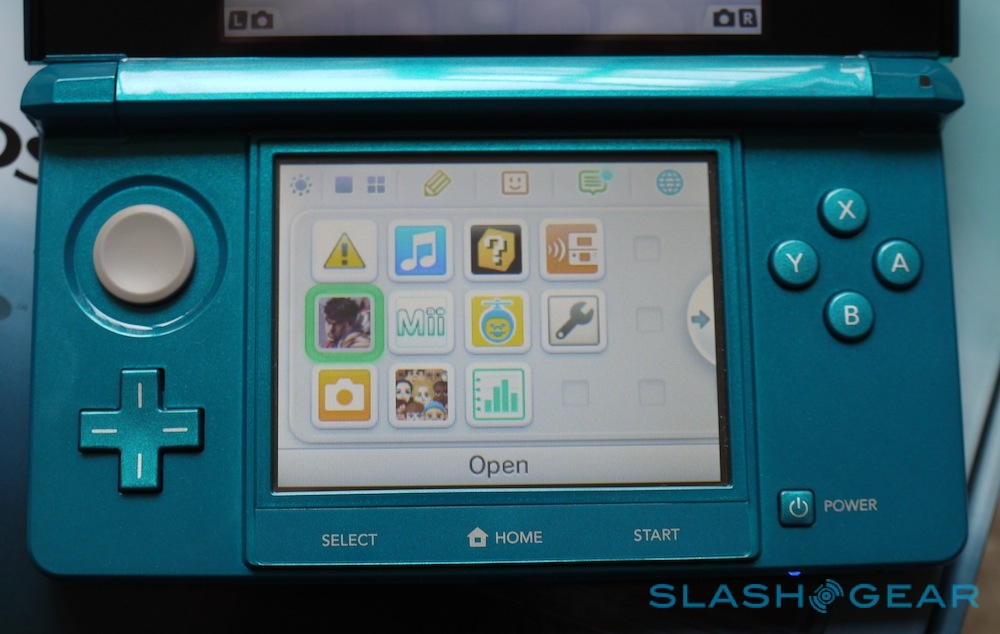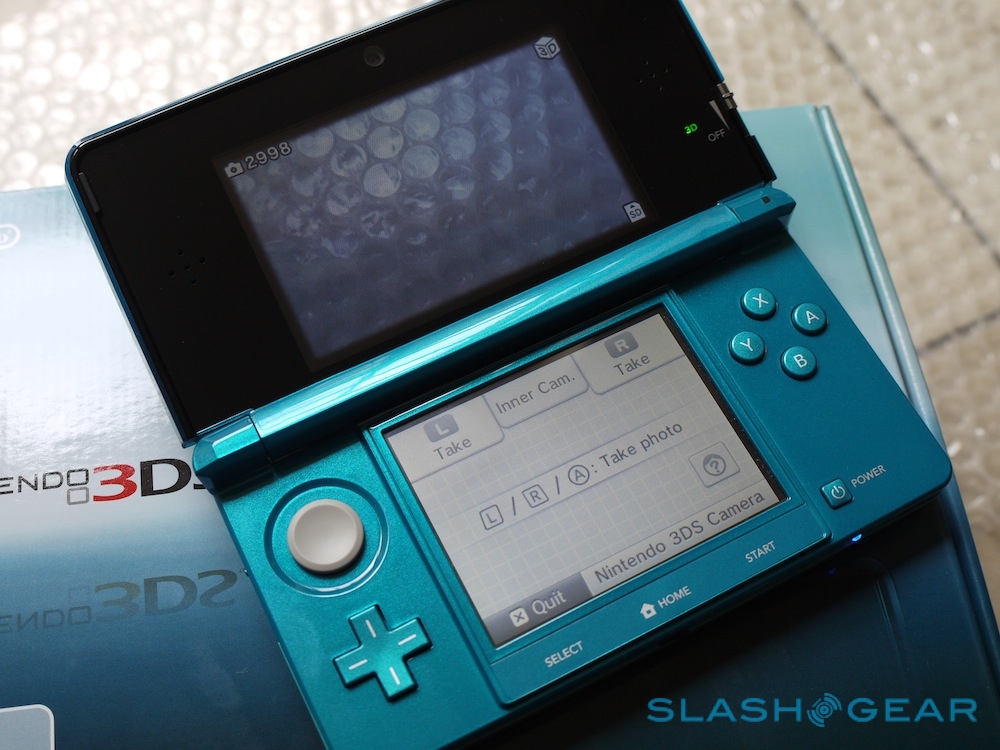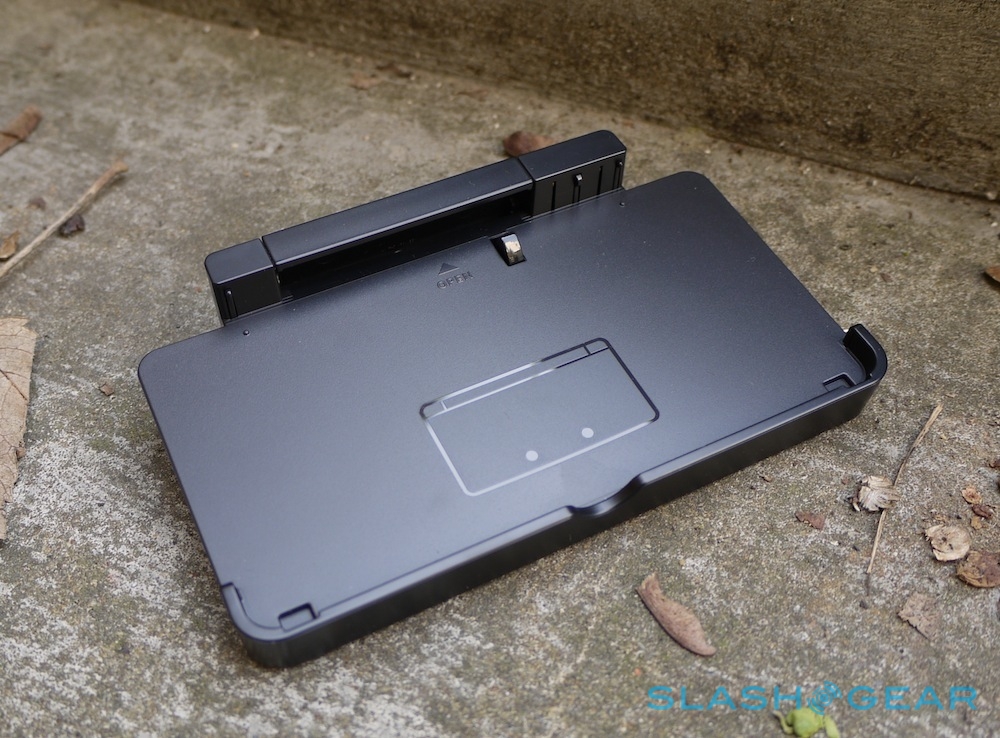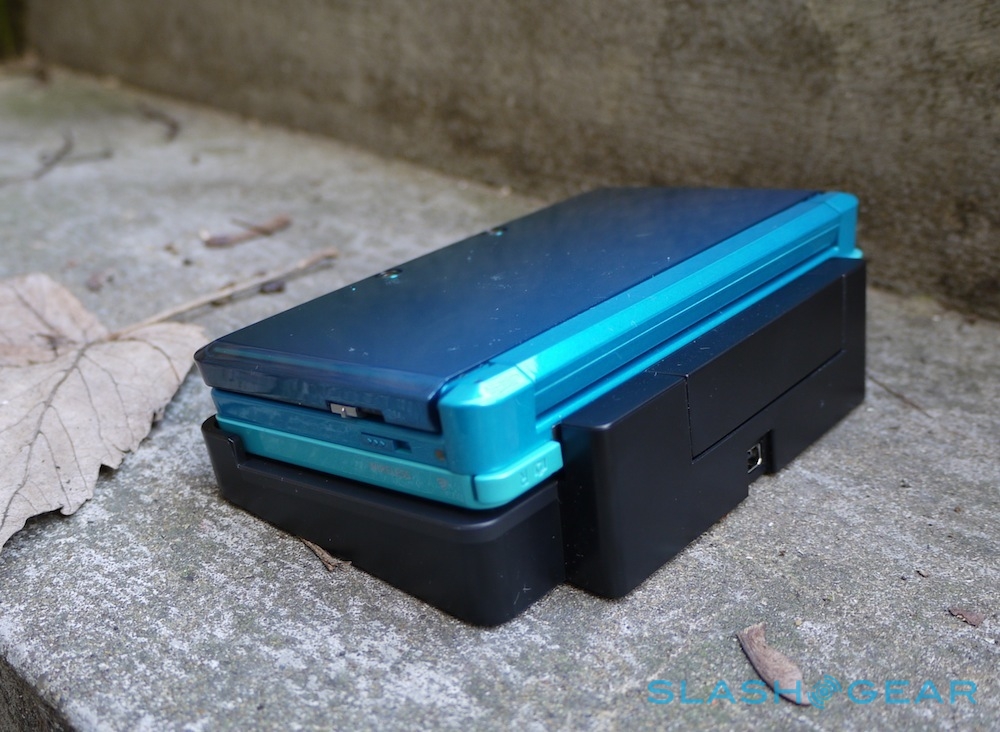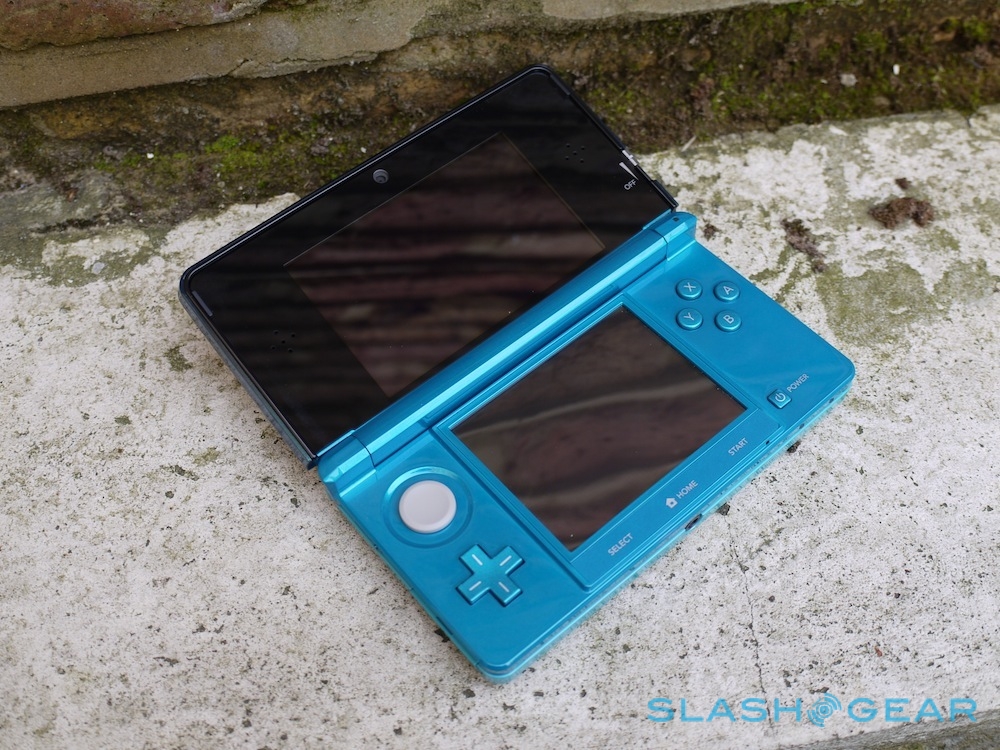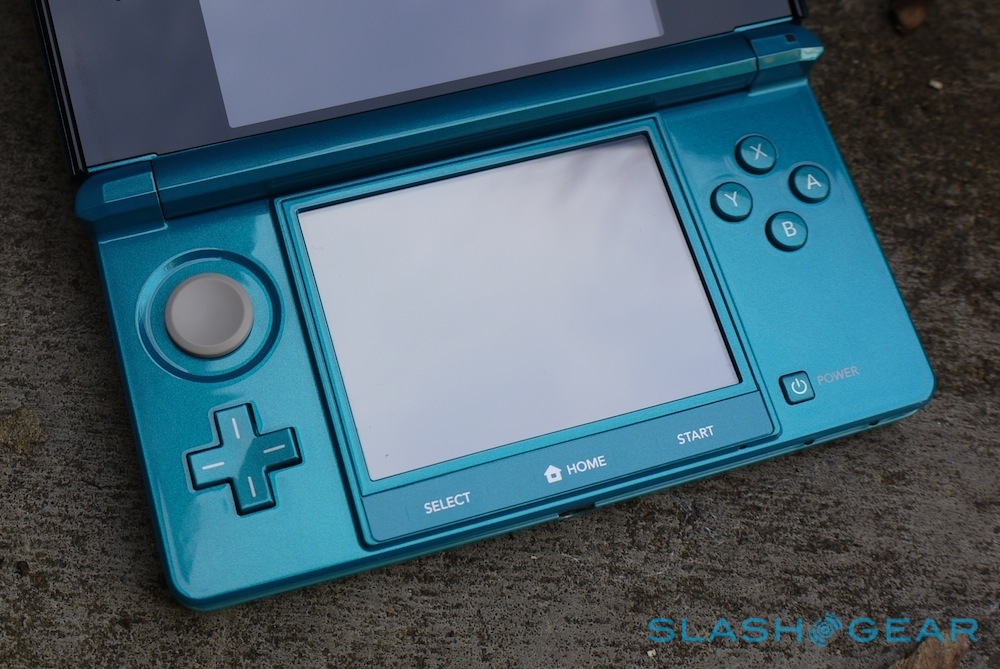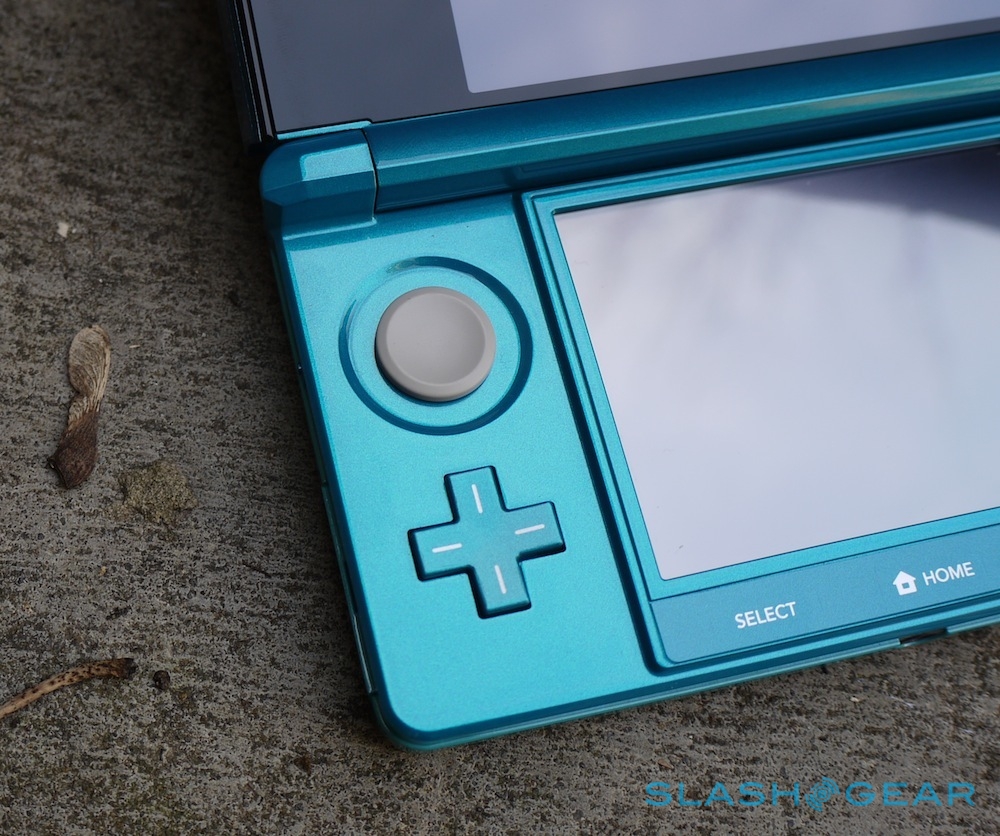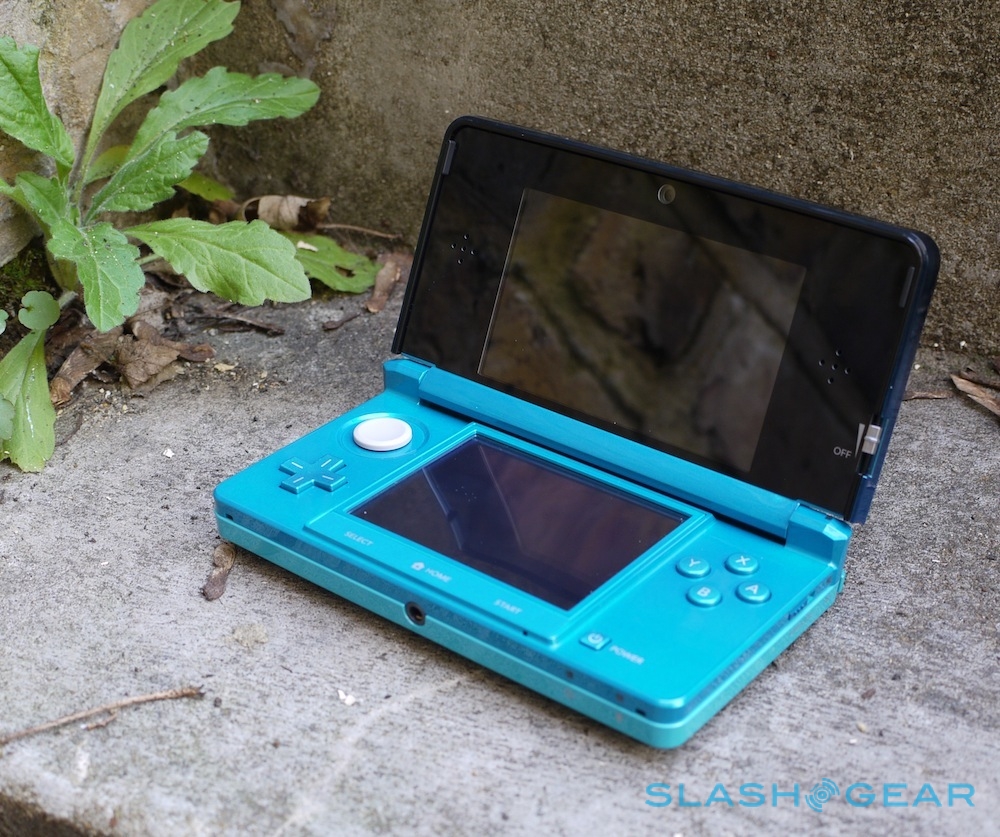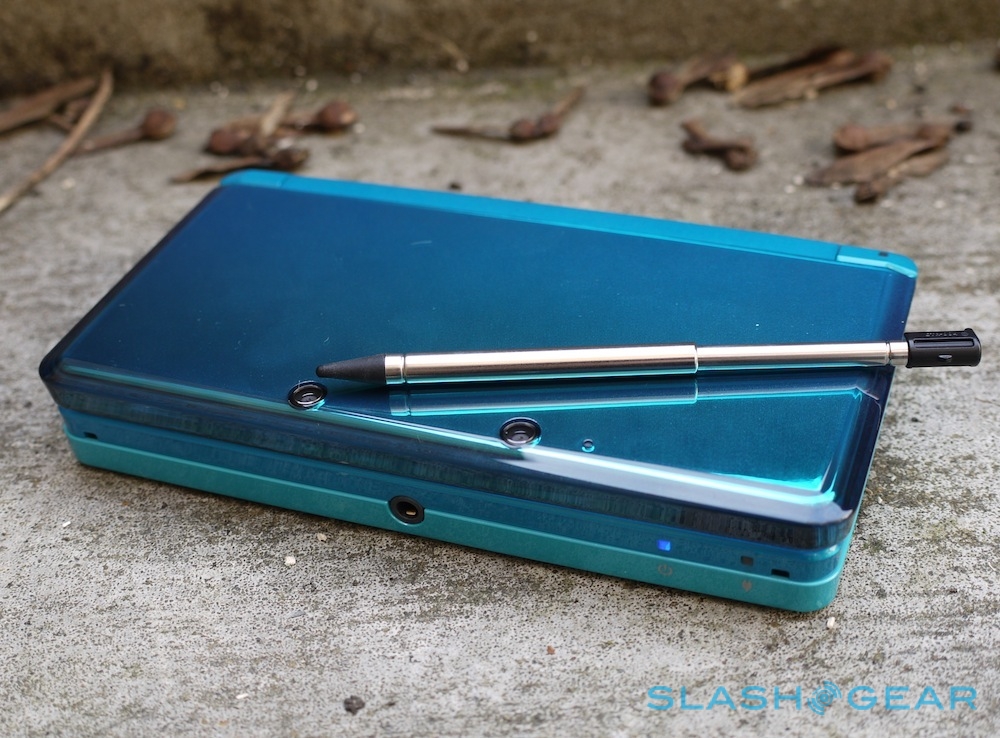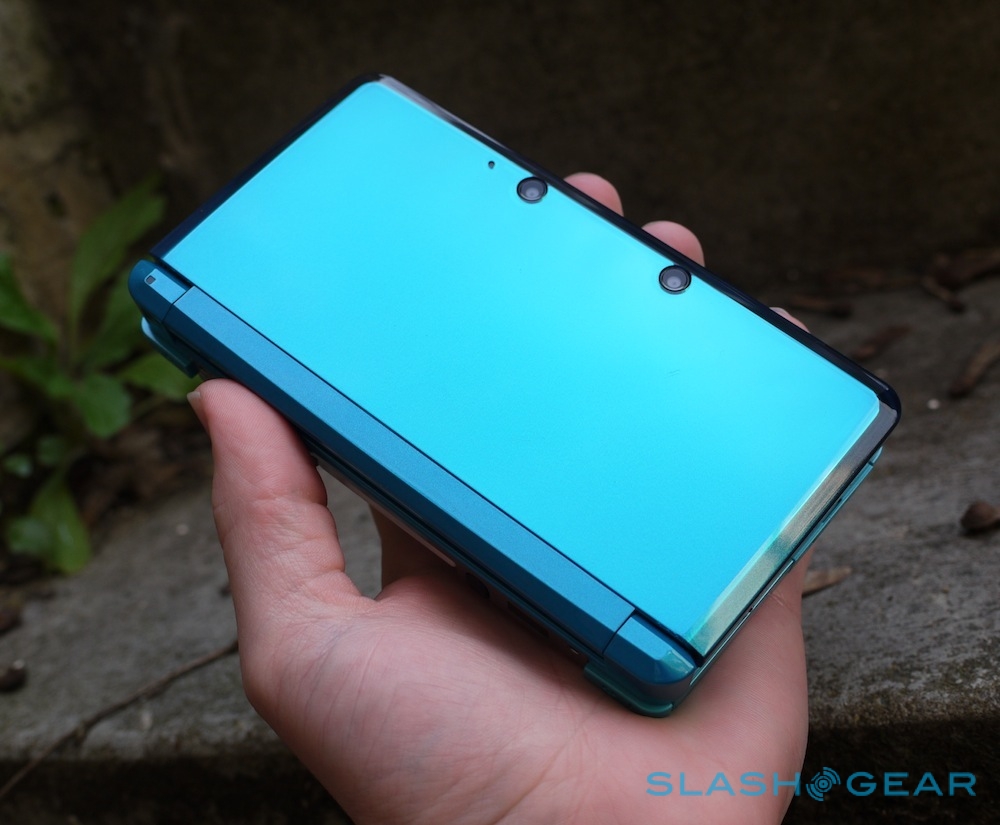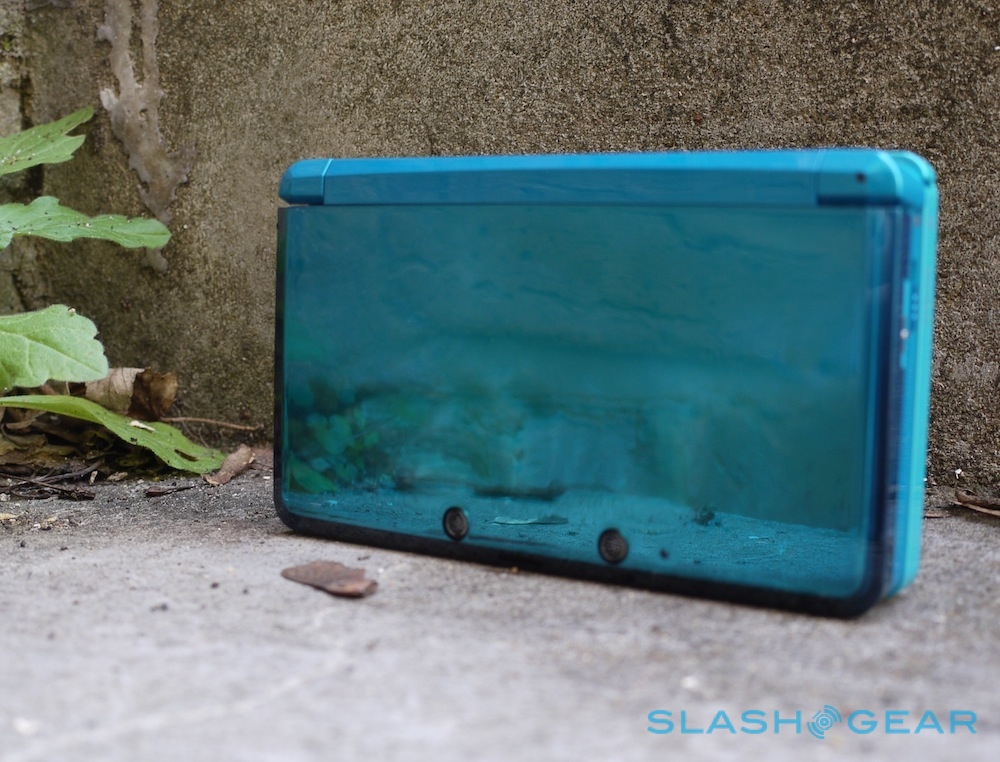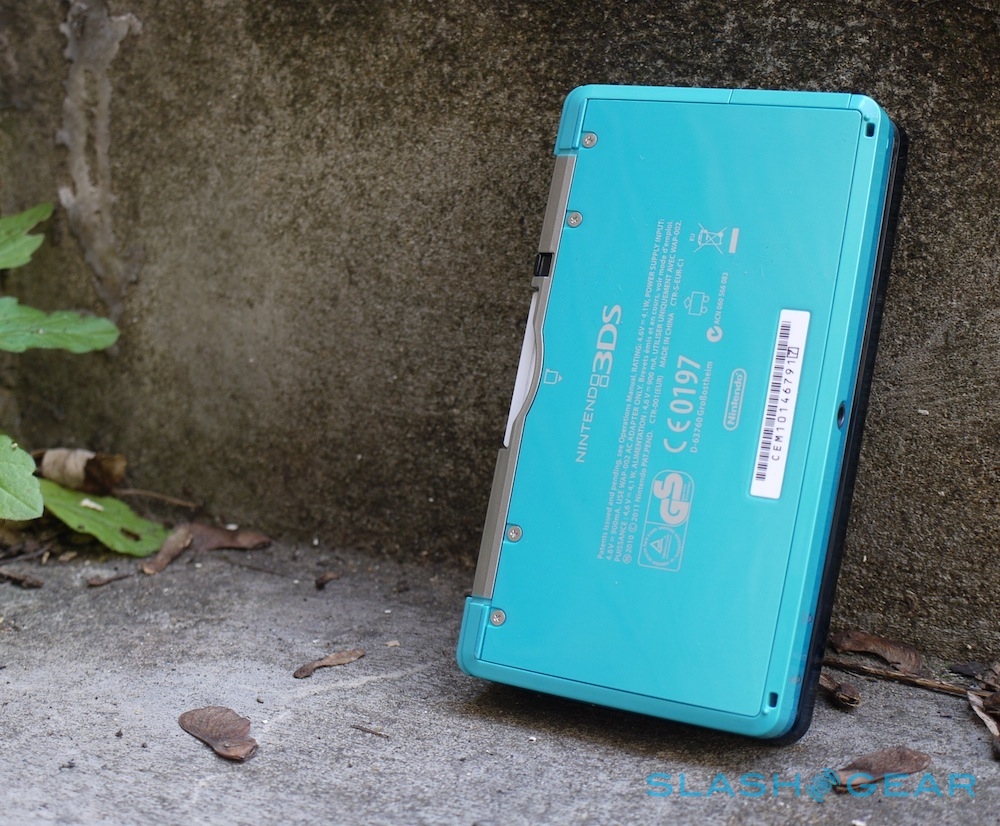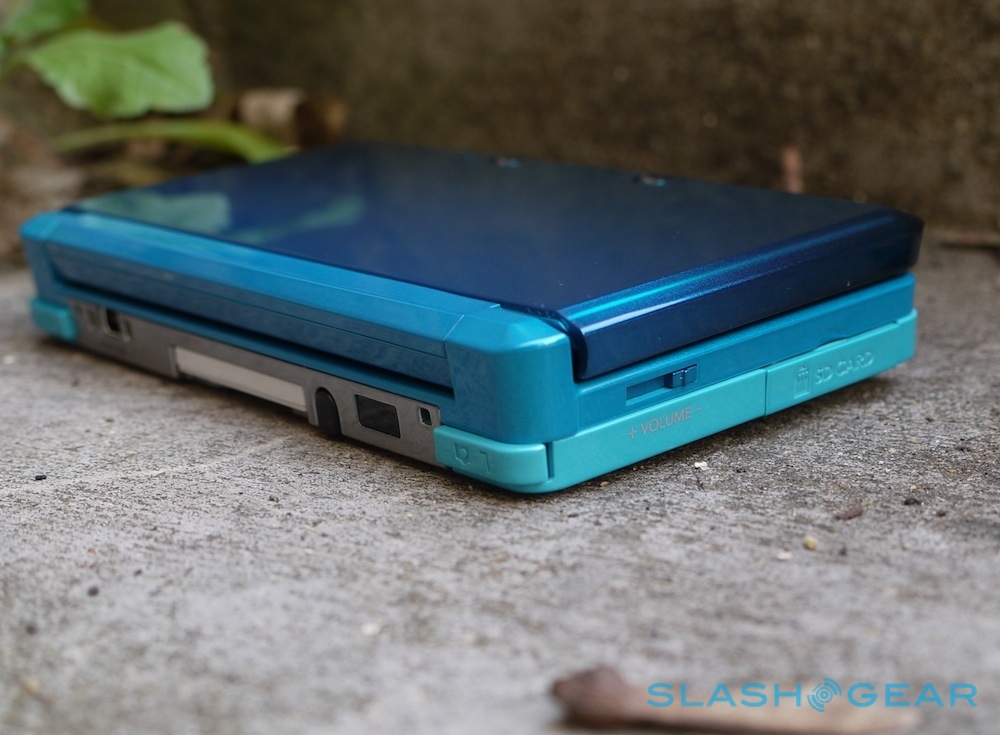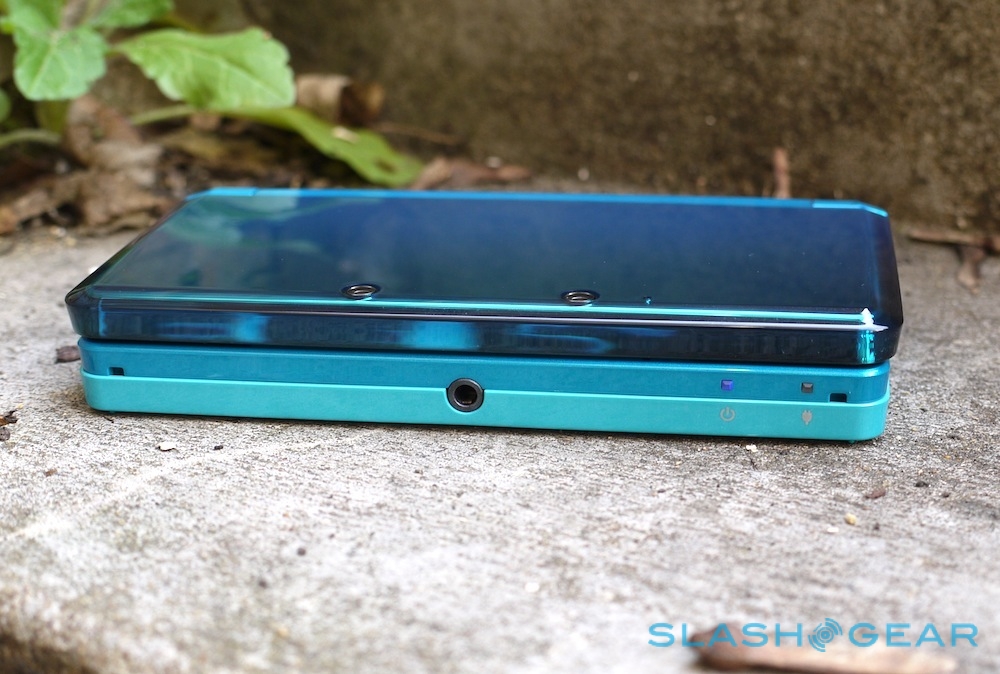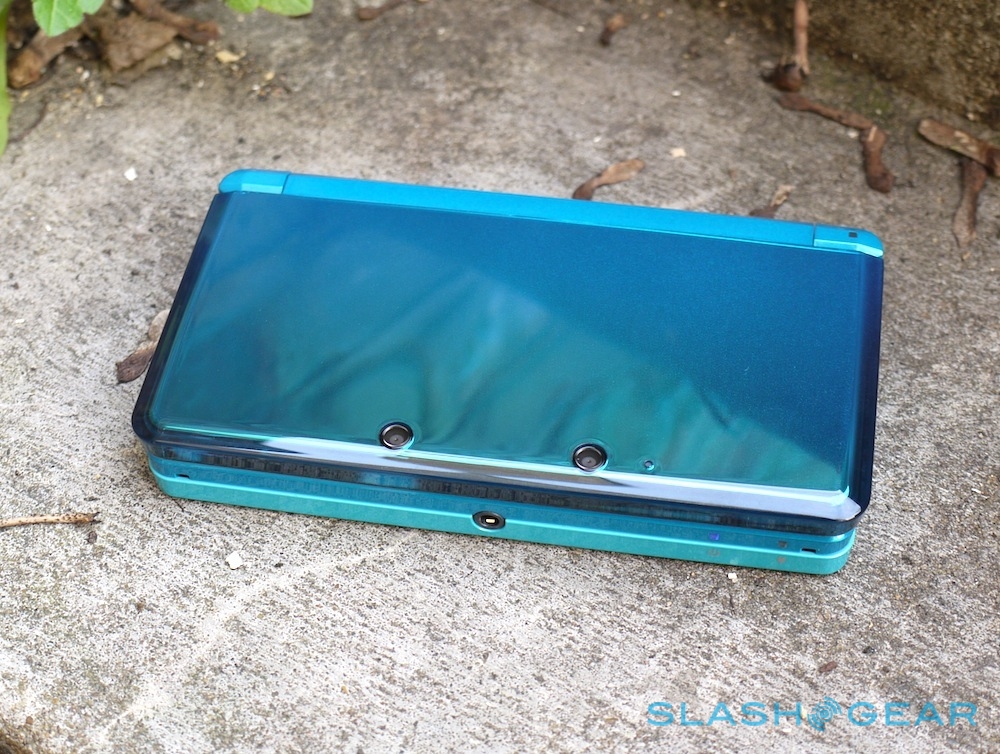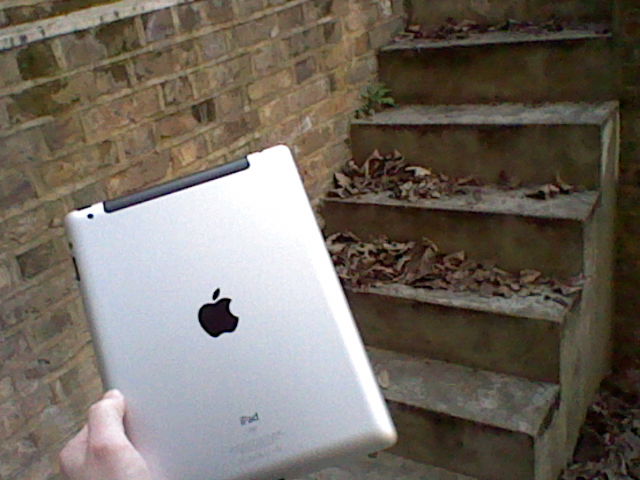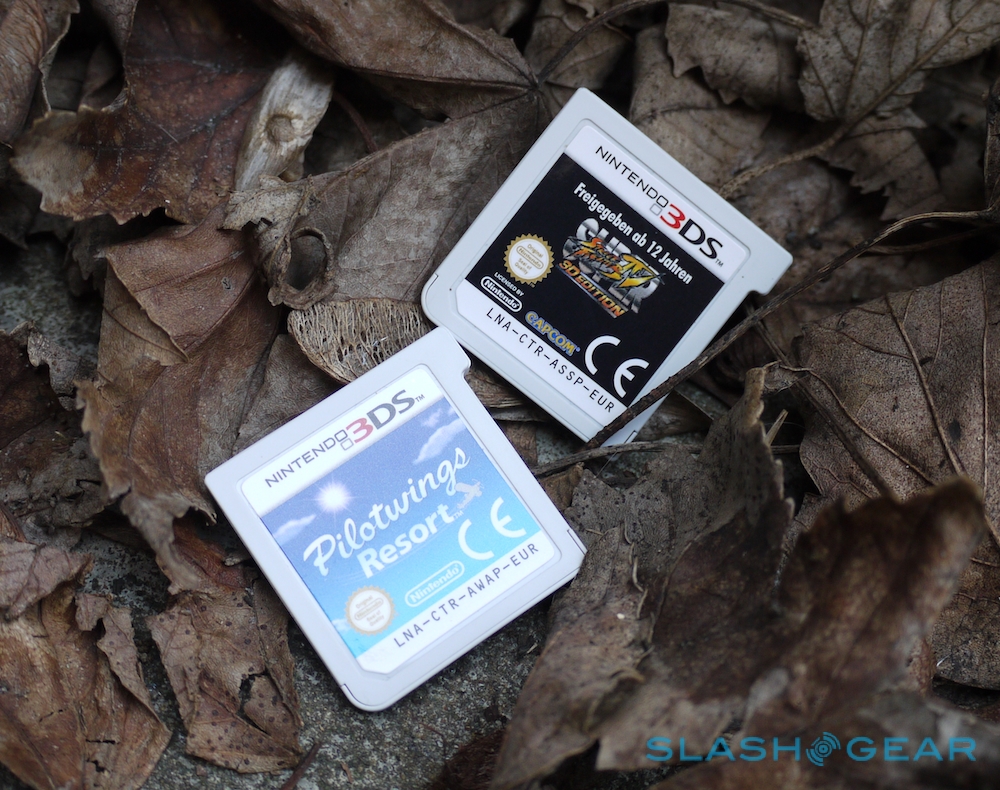Nintendo 3DS Review
Nintendo has a reputation for kooky, eccentric products, and on that front the 3DS is no different. Upgrading the now-familiar clamshell console with a glasses-free 3D display, it promises a new breed of games, impromptu social gaming with StreetPass, and the instant allure of 3D photography and Augmented Reality. Still, while Nintendo has been busy getting its freak on, the mobile gaming market has become a whole lot more serious. Just about every gadget that wants a place in your pocket – your cellphone and PMP included – wants to take care of your gaming needs as well, and so the 3DS has more competition than ever before. Can the console deliver, or do its eccentricities count it out? Check out the full SlashGear review after the cut.
Hardware
Style-wise the 3DS is classic Nintendo, obviously related to the DSi and DS Lite before it. At 134 x 74 x 21 mm it's actually slightly narrower than the DSi, though a little thicker when closed. Physically it's angular and bristling with ports and buttons, with a shimmering metallic-effect plastic casing that feels solid and creak-free. The lid snaps open with an audible click and defaults to a reasonably broad angle; it likes to stay there, too, so more personal adjustments aren't particularly accommodated. A slight curve to the profile makes it easy to open up, and the 230g weight is only a little greater than the DSi's 214g and well under the DSi XL's 314g.

Inside there's a mixture of mystery and custom chips, with Nintendo keeping the exact specifications of the 3DS' processor secret. What has been confirmed is the custom Digital Media Professionals PICA200 chip, a departure from the proprietary Nintendo GPUs of previous models. We can't argue too much with the performance, with menus and UIs moving quickly and lag-free, though individual apps and games – more on which later – do take a little longer to boot. with little in the way of delay. There's also 2GB of storage pre-installed in the SD card slot.
The big news, of course, is the 3D display, which joins the 3.02-inch 320 x 240 resistive touchscreen on the lower half of the 3DS. A 3.53-inch autostereoscopic screen, it offers glasses-free 3D as long as you're looking dead-on. Resolution is 800 x 240, though because of the way the 3D picture is created – splitting the pixels between each eye and refracting them through an adjustable parallax barrier – the effective resolution is 400 x 240. Still higher than previous DS', though.
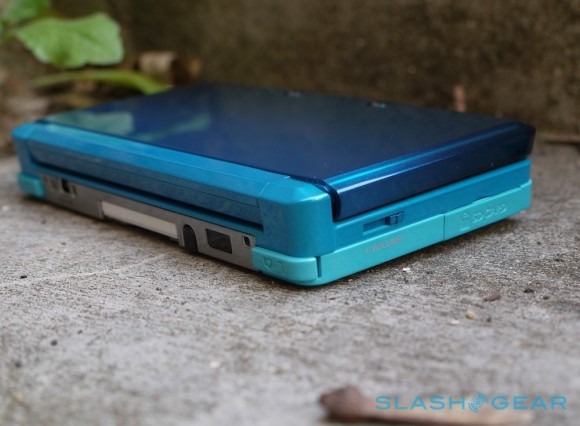
Ports include a game card slot on the back that will take new 3DS titles and existing DSi/DS games, but not the larger Game Boy Advance carts, along with the SD slot, a proprietary power port for rejuicing the non-user-replaceable 1,300 mAh battery. The extending stylus is on the back, along with an IR port, while a wireless switch for the WiFI b/g is on the right edge and a volume slider on the left edge. At the front is a centrally-positioned 3.5mm headphone jack, along with power and charge LEDs.
On the outer edge are two cameras, each shooting at VGA resolution. Flip open the lid, and stereo speakers flank the upper display; there's also a microphone and another VGA camera for self-portraits. Nintendo supply a docking station that can be used to recharge the 3DS, or alternatively you can plug the AC adapter in directly.
Controls
Despite the similarity in sizes, Nintendo has been considerably more ambitious with its range of hardware controls and sensors on the 3DS. As well as the left and right shoulder buttons, normal A/B/X/Y cluster and power key, there's both an analog "circle pad" and the usual D-pad, the latter having shifted down to a less-than-ergonomic position almost in the bottom left-hand corner to accommodate. The Select/Home/Start keys now run under the touchscreen, and we can't help but wish Nintendo had differentiated between them with at least a ridge between the three.

Still, the new analog pad is tactile and usable, with a soft-touch rubberized finish that cups the thumb nicely. Nintendo's usual well-sprung buttons leave us no room for complaint, and – mildly frustrating D-pad positioning aside – there are no significant ergonomic blunders. The resistive touchscreen is easily stabbed with the stylus but is still manageable – even with the onscreen QWERTY keyboard – with a fingernail. Inside there's now a 3-axis accelerometer and a 3-axis gyroscope for motion-sensitive games.
3D
Say 3D and traditionally you think of pictures leaping out of the screen at you; the 3DS, however, works the other way around. Instead of pushing content out, it adds a sense of depth to graphics and video. As with all glasses-free 3D there are limitations, primarily as to where you can actually see the effect from: you need to be facing the 3.53-inch panel head-on, with the 3DS around 12-inches away from your face, and with little in the way of movement (even if you're getting excited about the game).
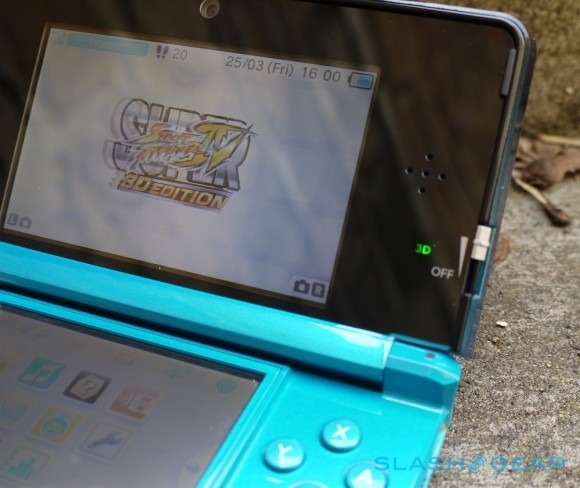
Nintendo's initial 3D tutorial and setup wizard does a great job when it comes to both wow-factor and familiarizing users with the system. There's undeniably something impressive when, after a 3...2...1... countdown, the 3D effect switches on. The tendency, at least initially, is to try to tilt the 3DS from side to side and "look around" the screen, though of course when you move more than a few degrees off-center you lose 3D altogether. That also means anybody watching you play won't get to see the effect either.
On the right edge of the screen is a 3D depth slider, cranking the effect from maximum – which requires you have the 3DS closer to your face – to 2D mode, where the 3D visuals are shut off altogether (but you still only get a 400 x 240 image). Most of the time we had the slider at the 3/4 position and could leave it there, though switching games did usually require a little tweaking.

It all works, and it works very well, but there are potential health hiccups that Nintendo is being very upfront about. The 3DS startup screen and individual games themselves all warn about long-term use of 3D graphics, suggesting as much as 10-15 minutes rest per half-hour session. We had mixed results when it came to eye-strain; although regular gameplay left us with no real issues, when playing 3D titles when moving (on public transport, not while we were simultaneously trying to drive!) we found ourselves feeling a little queasy. Snapping the 3DS shut addressed that straight away, however. Overall, while the temptation is to crank the 3D depth slider all the way to the top and "get your money's worth," a more measured approach pays dividends on your eyes.
Games
An 18-strong line-up of launch titles are on offer with the Nintendo 3DS, including Nintendo's own The Legend of Zelda: Ocarina of Time 3D, Star Fox 64 3D, Kid Icarus: Uprising and new installments in the Mario Kart series. Meanwhile a range of third-party games are also on offer; the full list is here.
Nintendo supplied two 3DS titles, Streetfighter IV 3D Edition and PilotWings, which ironically did a good job of demonstrating that 3D graphics aren't necessarily a must-have across the gameplay board. PilotWings was most successful, with the added depth lending exploration of the 3D environment a far more immersive feel. Pushing the slider all the way to 2D proved that, with the game feeling far less interesting once we'd experienced it in three dimensions.
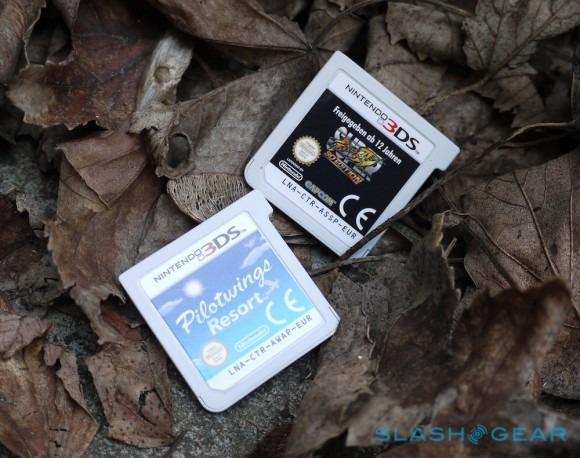
Streetfighter IV 3D Edition, meanwhile, felt less in need of 3D sprucing. There's a new 3D perspective on offer, but what you gain in graphical glitz you lose in actual playability. Played side-on, as usual, and the 3D effects don't really add to the gameplay, though the 3DS' graphics potential gets a decent workout and the whole thing is a neat step up over what earlier DS versions are capable of.
StreetPass
Close the 3DS' lid and the console enters sleep mode, with the WiFi still active and looking out for friends to talk to. Walk within range of another 3DS and StreetPass automatically exchanges some basic stats: your Mii avatar, performance figures and even puzzle pieces in the Puzzle Swap mini-game. Obviously its usefulness will depend on how many 3DS owners are near you; city-dwellers will probably have more luck.
Camera, Augmented Reality and Apps
While 3D gaming on the 3DS is as complete as you'd expect, at the periphery of the mobile experience the Nintendo starts to feel like a work-in-progress. There's no browser, nor access to the Nintendo eShop, both of which will be added later in the year in a firmware update. Similarly, for US owners a summer update will add Netflix video streaming support over WiFi, and free access to AT&T's thousands of Hotspots.
Out of the box, though, the experience is somewhat half-baked. The 3D cameras are likely to be the biggest initial draw, a pair of 0.3-megapixel lenses on the outer lid that can snap 2D or 3D pictures at uninspiring 640 x 480 resolution. 3D focus defaults to automatic, but can be controlled manually, and there are various effects ranging from simple pinhole and low-light shots, to a face-swapping mode which overlays your own face (as seen by the internal camera) over the top of whatever you're looking at, and a bizarre "Sparkle" mode which sprinkles bubbles, stars, confetti and other madness over the frame when you blow on the microphone.

Manual controls include some tweaking over sharpness, contrast and brightness, and there's a self-timer which can also be triggered by noise, but there's no escaping the generally underwhelming end result. 3D pictures are definitely 3D, but tend to look like several layers of 3D pictures sandwiched together, while 2D shots are shown up by even the cheapest of cellphone camera. The fact that 3D playback is limited to the 3DS itself doesn't really help.
Instead, we had more fun with the bundled deck of six AR (augmented reality) cards. Placed on a table and viewed with the 3DS, five offer up 3D versions of famous Nintendo characters, but the sixth – with the question-mark – offers a selection of AR mini-games as in the video demo below. That's when the 3DS' twin cameras and 3D display really come into their own, though it'll take some third-party support to give the concept legs. If developers get on board with sufficient imagination then this could well be the 3DS' USP.
Nintendo 3DS Augmented Reality Demo:
[vms c99f0e662c9177946c62]
Other apps are a little more mundane; there's a 3D Mii Maker to create a Nintendo avatar, and they can interact with other gamers in the StreetPass Mii Plaza, along with a pedometer that uses the accelerometer to count your steps and display the total on the homescreen. Face Invaders takes a snapshot of your own face and then creates a gurning 3D AR shooter out of it, with floating heads diving around the room as you attempt to shoot them out of the sky.

Finally there's 3DS Sound, an audio recording app which allows you to record samples using the console's microphone and then mangle them with various effects, speed and pitch control, and other variables. You also get a basic media player, which can handle MP3 and AAC files.
Battery
The 3DS may have the biggest battery of a DS to-date – 1,300 mAh versus the DSi XL's 1,050 mAh and the DSi's 840 mAh – but that doesn't add up to lengthy runtimes. Nintendo estimate 3-5hrs of 3D gaming, depending on whether WiFi is turned on and how bright the screen is, or 5-8hrs of DS gaming.
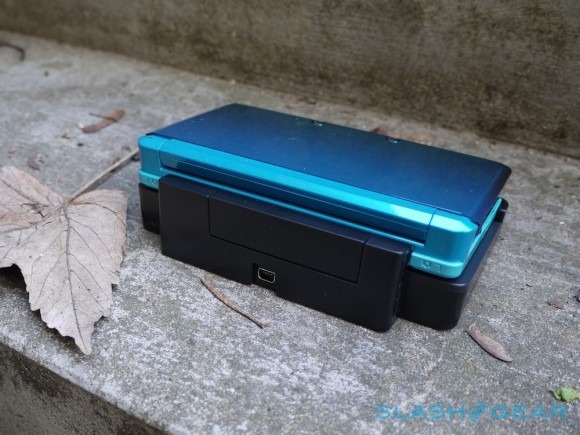
In reality, we managed just over 3hrs with wireless on. Turning WiFi off extended that a little further, but by under 30 minutes. In short, it's underwhelming, and while DS games will last a few hours more, the 3DS still can't keep up with a DSi or DS Lite. A user-replaceable battery would have been great, but is obviously too much to ask for, so expect to make plenty of use of the bundled charging cradle. Adding insult to injury, the 3DS isn't especially speedy when it comes to recharging, either.
Wrap-Up
There's no denying that the Nintendo 3DS offers a significant step up in features compared to its predecessors. The 3D flits between being a gimmick and adding a true extra layer of depth to the gaming experience, and while it's not appealing to everybody, it does at least give the Nintendo a unique proposition among handheld consoles. Unfortunately, some of the hardware decisions undermine the overall value, like the mediocre resolution of the camera for 2D or 3D stills, and the disappointing battery life.
Value in itself is a tricky one. At $249.99 in the US and around £196.99 in the UK, it's considerably more expensive than the $129.99 DS Lite; titles, meanwhile, are a hefty $39.99 each, and we're yet to see the "must have" game to convince us both of the 3DS in general and 3D gameplay specifically. That will hopefully come with time, though, as developers familiarize themselves with the Nintendo's abilities and take advantage of the 3D, augmented reality and StreetPass cleverness.

They'll need to step up, since the 3DS' primary competition no longer comes from Sony's PSP and the incoming NGP. Instead it's smartphone gaming that presents the biggest challenge, a huge – and growing – number of titles with, in comparison to each Nintendo cartridge, throwaway price tags and increasingly sophisticated gameplay. Handsets like the LG Optimus 3D and HTC EVO 3D will mount challenges when it comes to glasses-free 3D gameplay, too, and both phones have significantly higher resolution cameras than the 3DS' VGA array.
The Nintendo eShop will hopefully bridge that gap between casual and regular gaming, but that the 3DS launches without it – and without the browser – is a gaping hole in the handheld's allure. That should be addressed midway through the year, and then Nintendo will have to fight to bring in the sort of developer support that iOS and Android gaming has already secured. 3D video content, as the company is also investing in, will add another string to the 3DS' bow, and further increase the value proposition.
One thing is for sure, mobile gaming is heating up, and simply being a good distraction for when you're on the bus is no longer sufficient. Today's gamers want not only compelling titles but a functionality long-tail that demands apps, internet support and social gaming. The 3DS isn't quite convincing on all of those fronts, at least at launch, but the roadmap looks solid and, if those components slot into place, then we're confident it will carve out a distinctively-Nintendo niche in the market.

